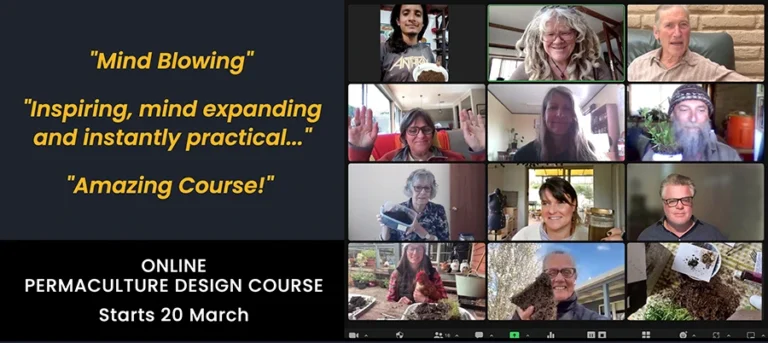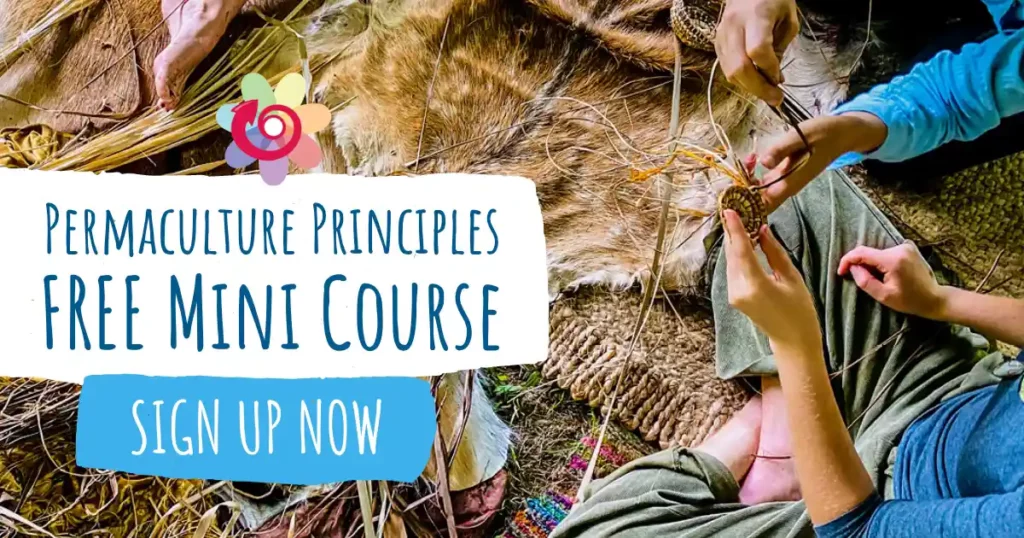"Vision is not seeing things as they are but as they will be"
We can have a positive impact on inevitable change by carefully observing, and then intervening at the right time.
The butterfly is a positive symbol of transformative change in nature, from its previous life as a caterpillar. The proverb “vision is not seeing things as they are but as they will be” reminds us that understanding change is much more than a linear projection.
Check out more awesome stuff from Charlie Mgee and Formidable Vegetable
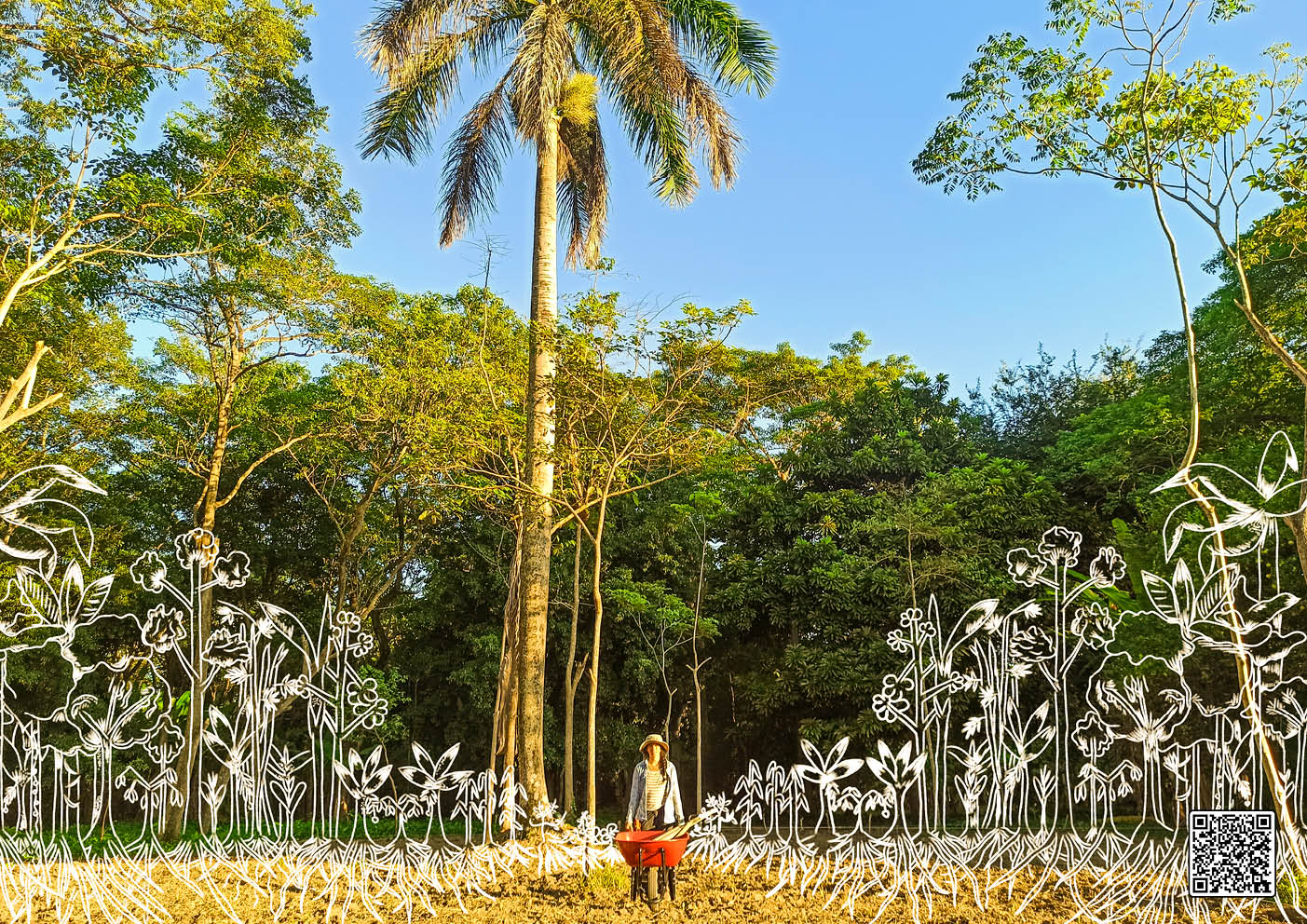
Visualising change
In order to do something we first have to dream it. Many changes in land systems evolve through natural processes. CGI is a tool that can help to visualise a plan or an evolving change, and can help to communicate that evolving change to others. With this image Ana inspires hope for the coming transition to a planted agroforestry landscape on the outskirts of an oil city in southern Mexico.
Photo by Angelica Paz, Permea Holistica from Villahermosa, Mexico
Submit your examples on Instagram #creativelyuseandrespondtochange
Applying the principle: Creatively use and respond to change
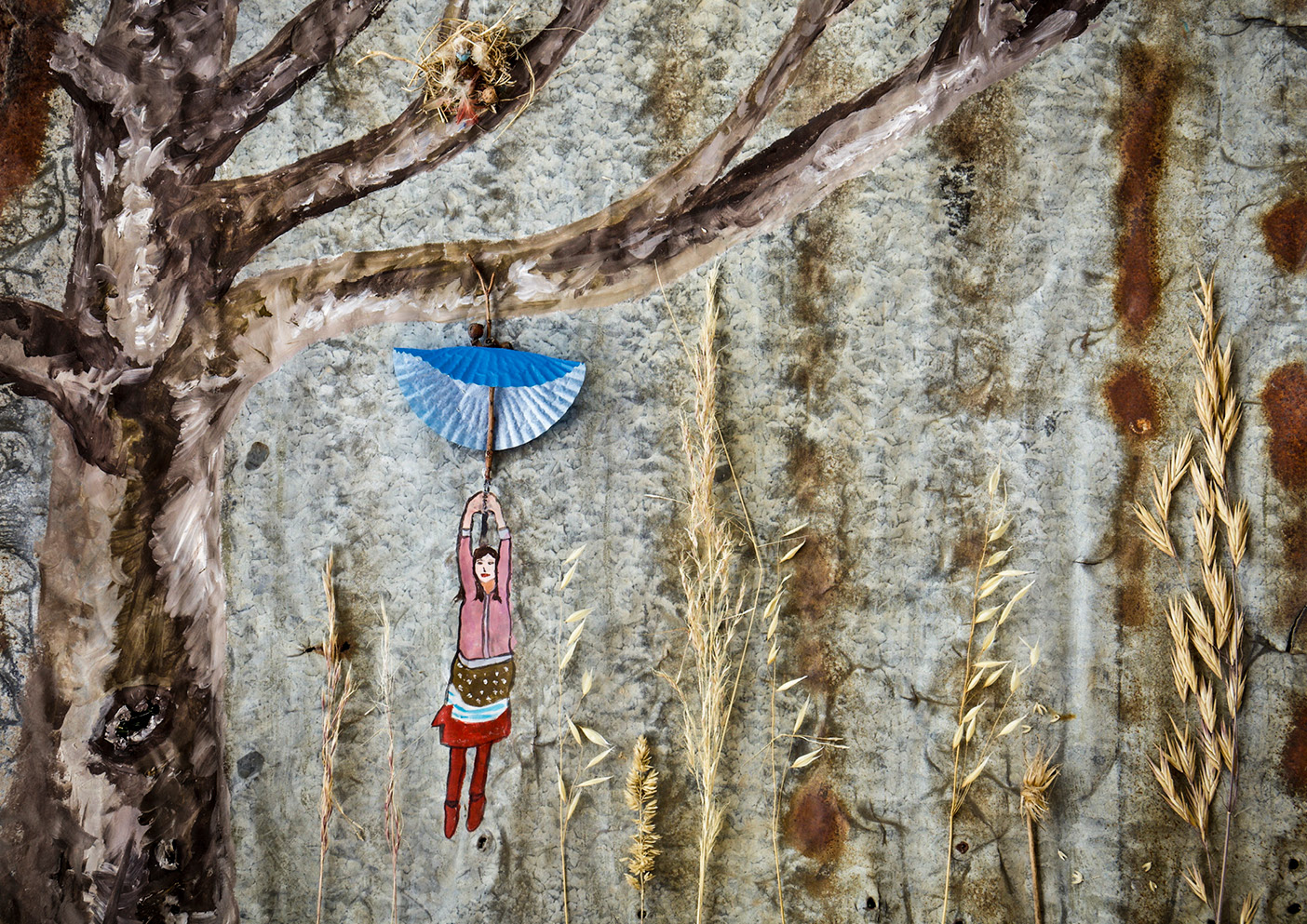
Perceptions, ideas, and actions
Art has always helped us to absorb and reflect on our experiences, to see things in a new way, to deepen our perceptions, to imagine possibilities, and to envision future transformations. Art can enrich our human experience, and help to open our minds beyond some of our everyday thinking. Yonke pasted these found items onto flattened iron, photographed them, and says she will now allow these materials to go back to nature.
Photo by Yonke van Geloven, La Fleur de Soul from her book Imagine: everything is a story waiting to be told on Dja Dja Wurrung Country, Victoria, Australia.
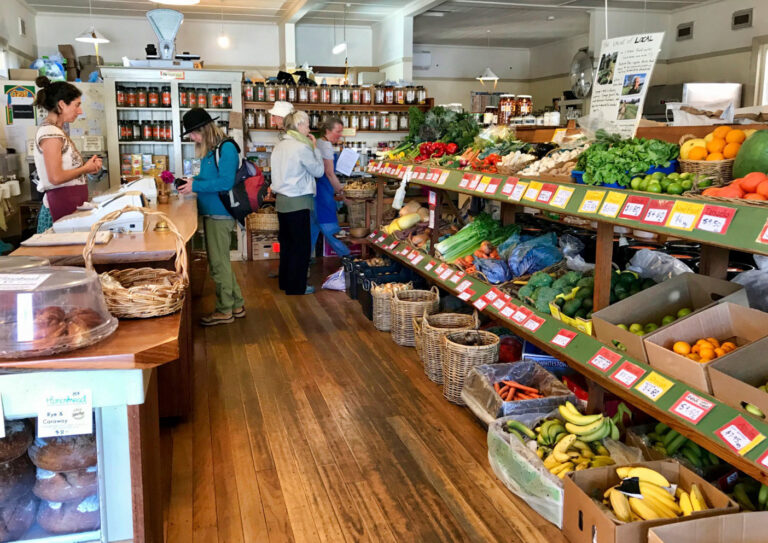
Changing markets, changing systems
Small co-ops like Candelo Bulk Wholefoods are a transitional space, providing a familiar shopping experience within a community controlled co-operative structure. They can supply their community with food that is affordable, wholesome, organic, local where possible and with minimal packaging. As established businesses, co-ops are well placed to educate consumers, offer opportunities for new local producers, and be an organising space for emerging local food systems.
Photo taken by Russ Grayson at Candelo Bulk Wholefoods Cooperative, Bega, NSW, Australia
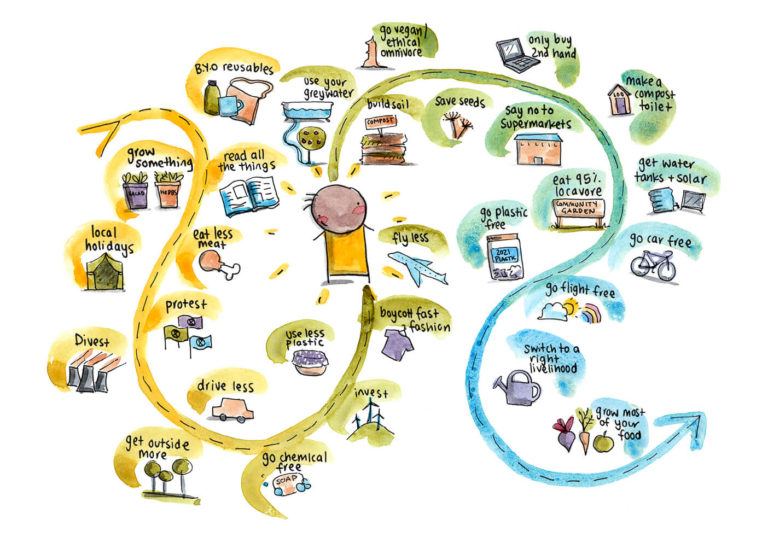
It’s a journey
It can feel overwhelming to create the life we want in these changing times. Thinking of each behaviour adjustment and new idea as a personal journey can help to make the task seem more possible. We all start from different points, and we all travel at a different pace. The important thing is that you’re picking up new habits and getting excited about new ways of doing things that are right for you. And who knows where you’ll be in five years.
Illustration by Brenna Quinlan in Hepburn, Victoria, Australia. Her work features in many products in our AU store.
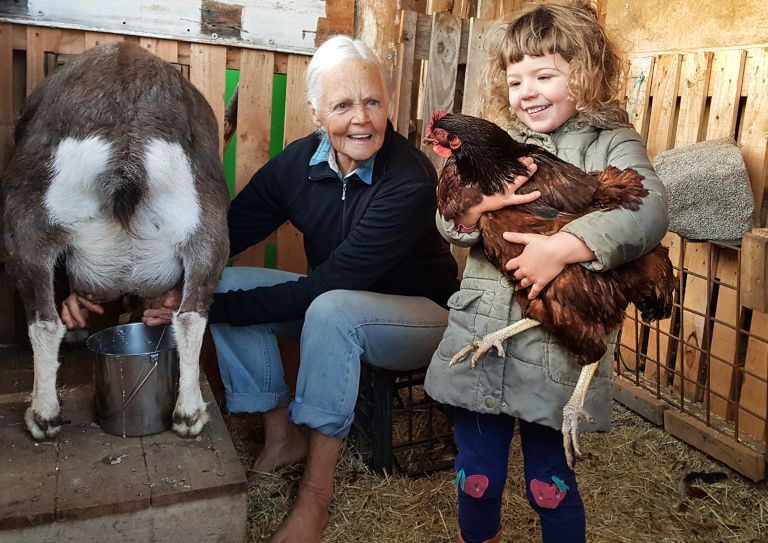
The future of the suburbs
Su milks a toggenburg goat on her visit to Good Life Permaculture at their suburban property in Hobart. Frida’s unexpected appearance is warmly welcomed as she appears with this chook that she has captured. Su shows an interest in where Frida is at whilst not letting that interrupt the milking of the goat. This spontaneous interaction between the very young and an elder provides a casual way in which knowledge and experience can be passed on to the next generation.
Hannah Moloney at Good Life Permaculture in Hobart, Tasmania, Australia”
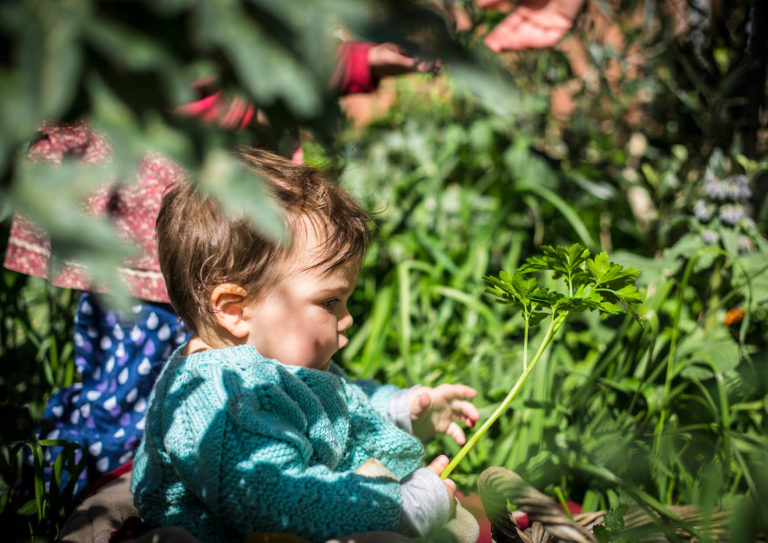
The kindergarten
Rye (10 months) and her big sister Winter (2) are occupied soaking up the garden and all its wonders while their mother Maria gets some weeding done. By exposing children to the wonders of the garden from early on, they osmotically absorb nature through all their senses. As children learn how the garden works, what is tasty, what is prickly and who it is home to, they will also be getting more energy and becoming more capable. The true children’s garden (kindergarten).
‘Photo by Oliver Holmgren and taken at Hibi Farm in Melbourne, Victoria, Australia.
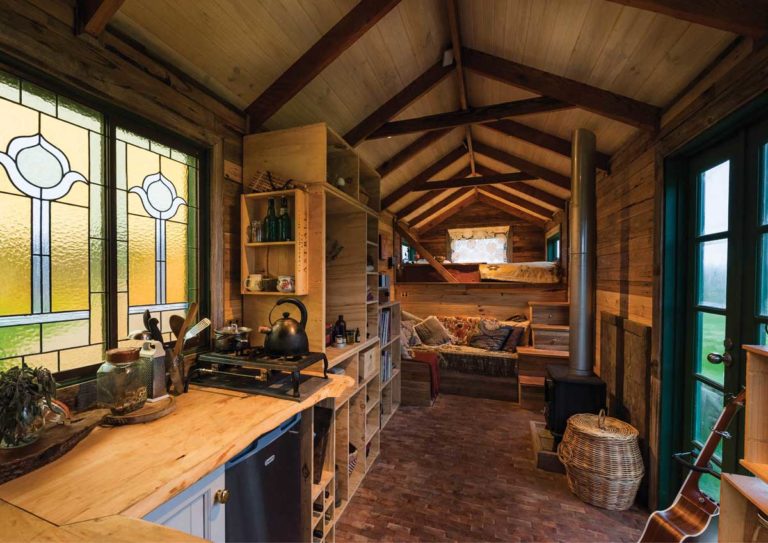
A cosy home on wheels
Searching for a more sustainable lifestyle, Adam and Sian moved to the country and soon felt the need to create their own shelter. They lived in the back of a 1969 Bedford truck while saving money, collecting materials and working on the design before transforming it into a cosy home with help from friends. The house truck is comfortable and quite heavy, not designed to move on a whim. Living on wheels gives the empowering flexibility to move with changing circumstances.
‘A cosy home on wheels’ photo by Keren Dobia. A tiny home built by Adam Hickman.
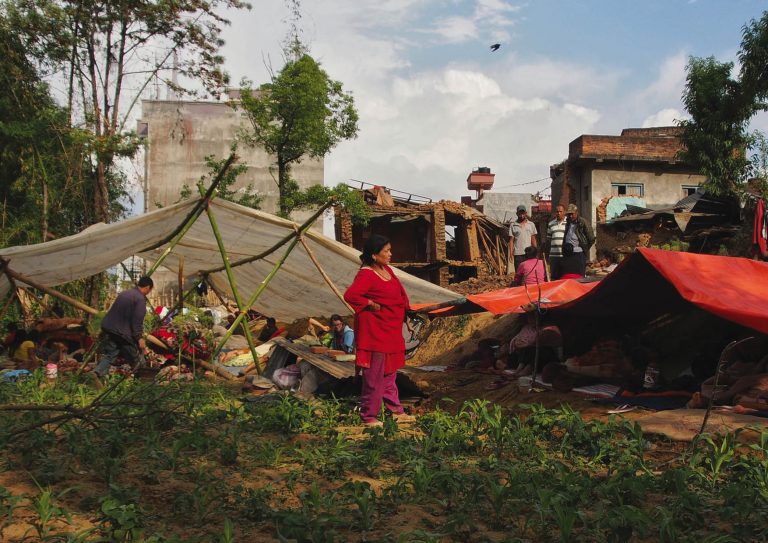
Crisis support through resilient design
The devastating 7.8 magnitude earthquake near Kathmandu destroyed over half a million homes. It was four days before the first emergency services and supplies reached this village. Sanumaya Shrestha and her family supported dozens of people who fled their unsafe homes for weeks, using supplies and produce grown at Sunrise Farm. With donations and volunteer support they have repaired and rebuilt using improved techniques, further demonstrating the benefits of resilient design.
Photo by Sebastien Brunel at Sunrise Farm in Nepal – a Permafund grant recipient.
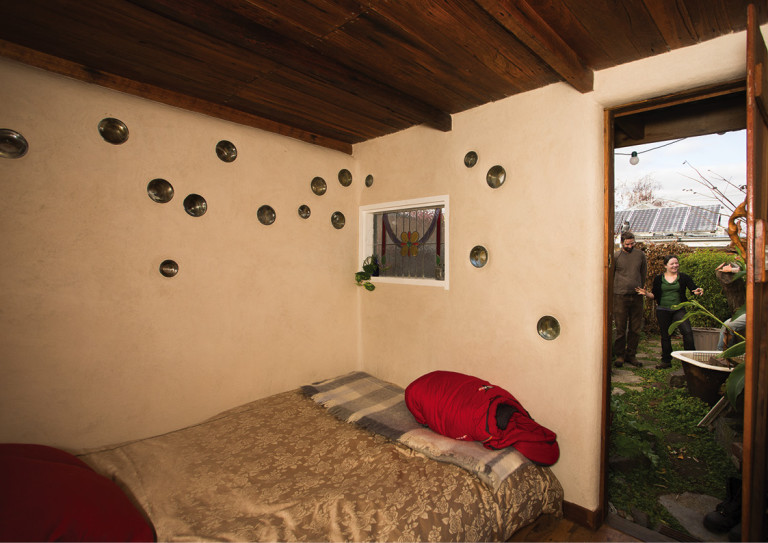
Rustic shed retrofit
This tiny bungalow was once a run down shed. Rather than rebuild from scratch Kat and Nick reused the timber frame, packing it with a straw and clay mix then rendering with fermented earth plaster. Creative use of glass bottles and refinished fence pailings for the ceiling beautify the space. The extra room provides a space for WWOOFers who, along with their hosts, contribute to the thriving garden that makes the most of every part of this small urban property.
Photo taken at ‘The Plummery‘ by Oliver Holmgren
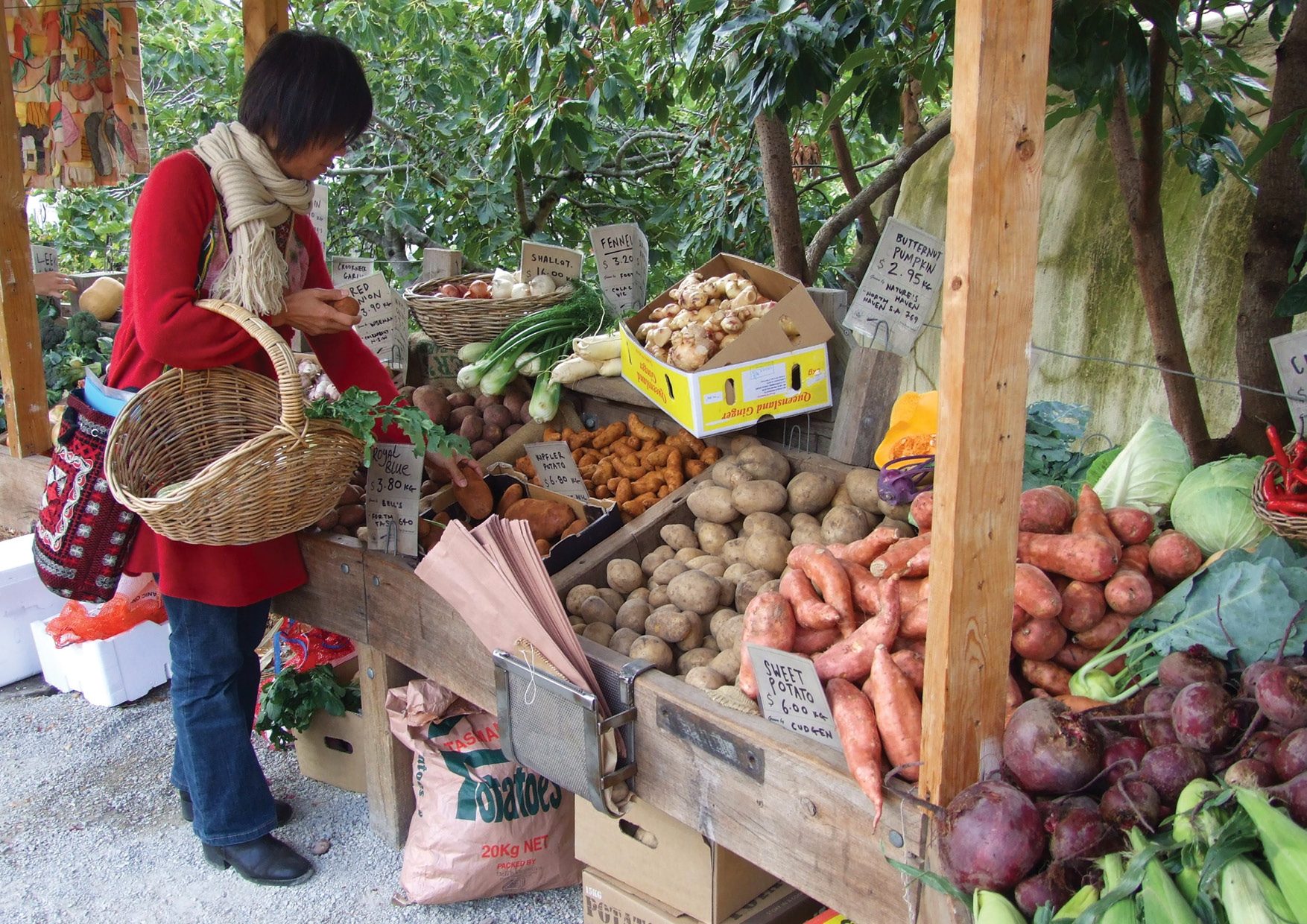
Choosing to eat fresh and local ingredients
It’s best to grow your own food or get some from someone you know nearby. Failing that try a farmers market or a retailer you can trust. At CERES Organic Market produce is grown on-site and at their own nearby market gardens. They purchase what they can’t grow from neighbours, local farmers, and to add variety, from the nearby wholesale market. All produce is labelled showing the grower and the origin so the customer can make informed choices.
Photo contributed by Richard Telford
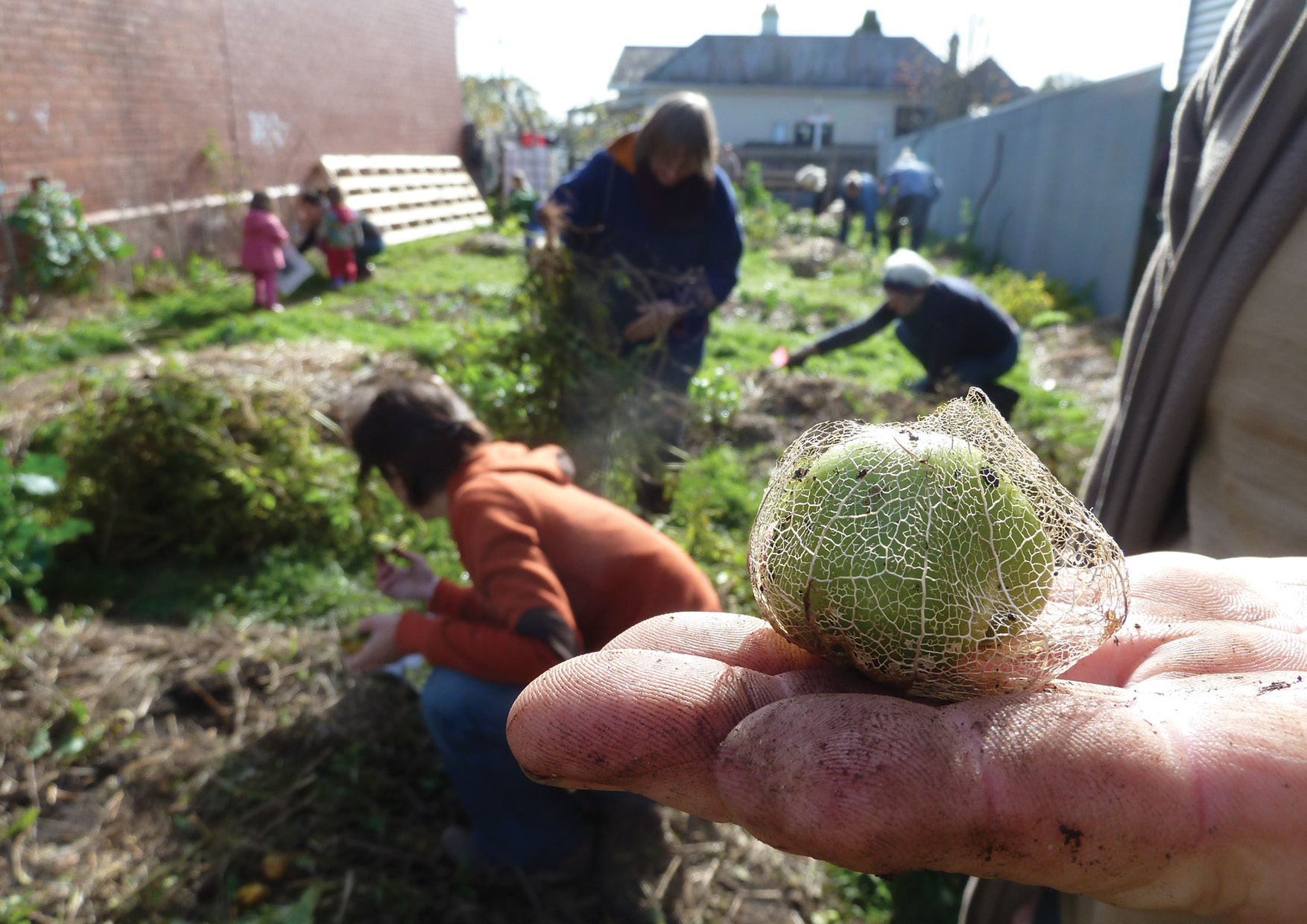
Changing the climate around Daylesford
An old tomatillo is found, it’s intricate outer case has begun decomposing but it’s contents are still edible. Daylesford Community Food Gardeners are at work compost building at their ‘annual food’ garden, one of the five around town. The group is establishing a food system enabling free, organic food in an era of increasing climate chaos, peak oil and dislocation from healthy foods and environments. Community gardening, ‘social warming’ in an era of global warming.
Photo contributed by Patrick Jones
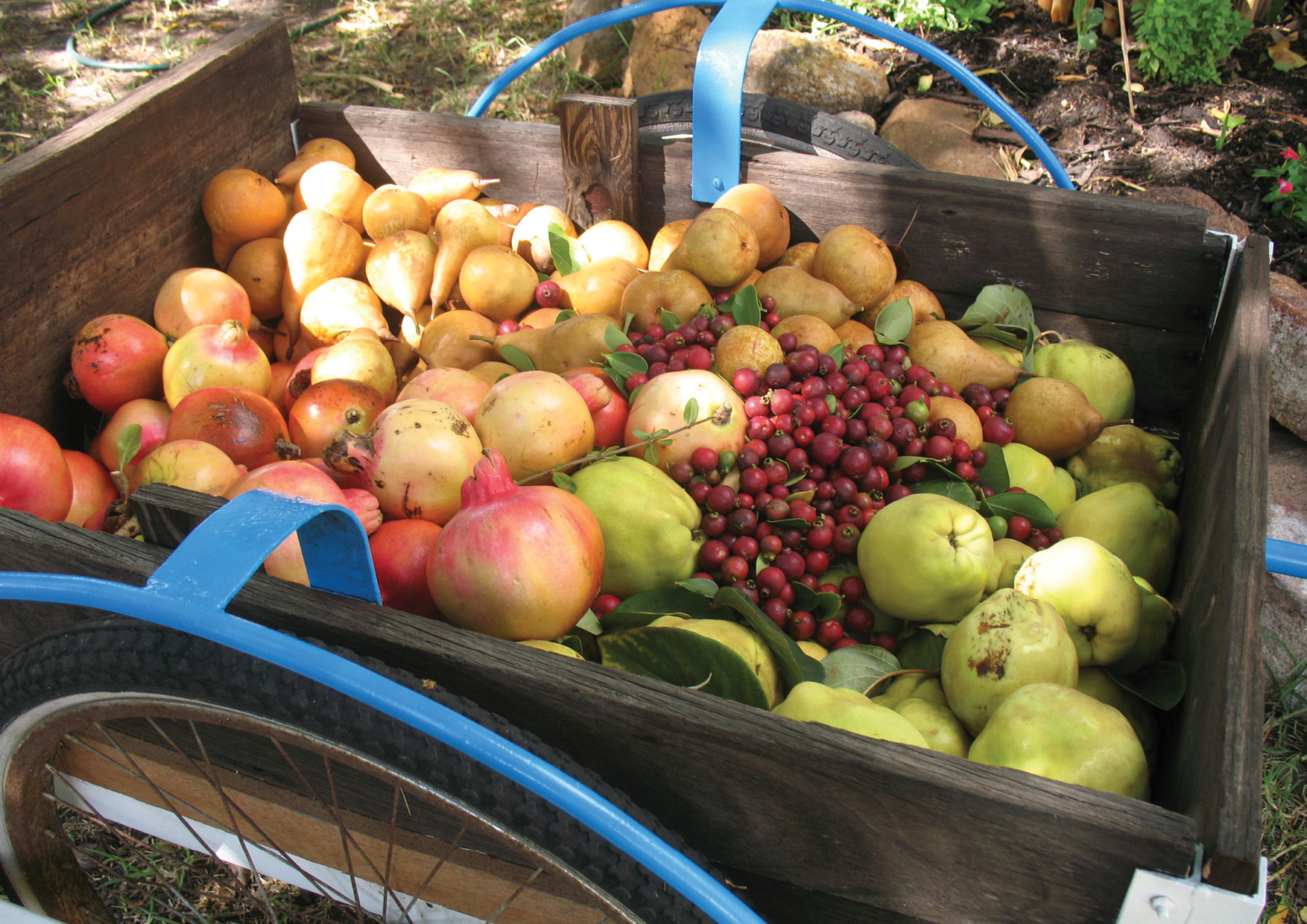
Planting for change
An autumn harvest selection of quince, pear, pomegranate and strawberry guava. As the seasons change so do the fruits we eat. With over 50 varieties of fruiting trees at Fair Harvest there’s something delicious to eat at all times of the year. With climate change affecting us all in different ways it is wise to observe the performance of a diversity of species to discover plants that best respond to the changing conditions, spreading the risk of some failures each year.
Photographed at Fair Harvest in Western Australia by Jodie Lane
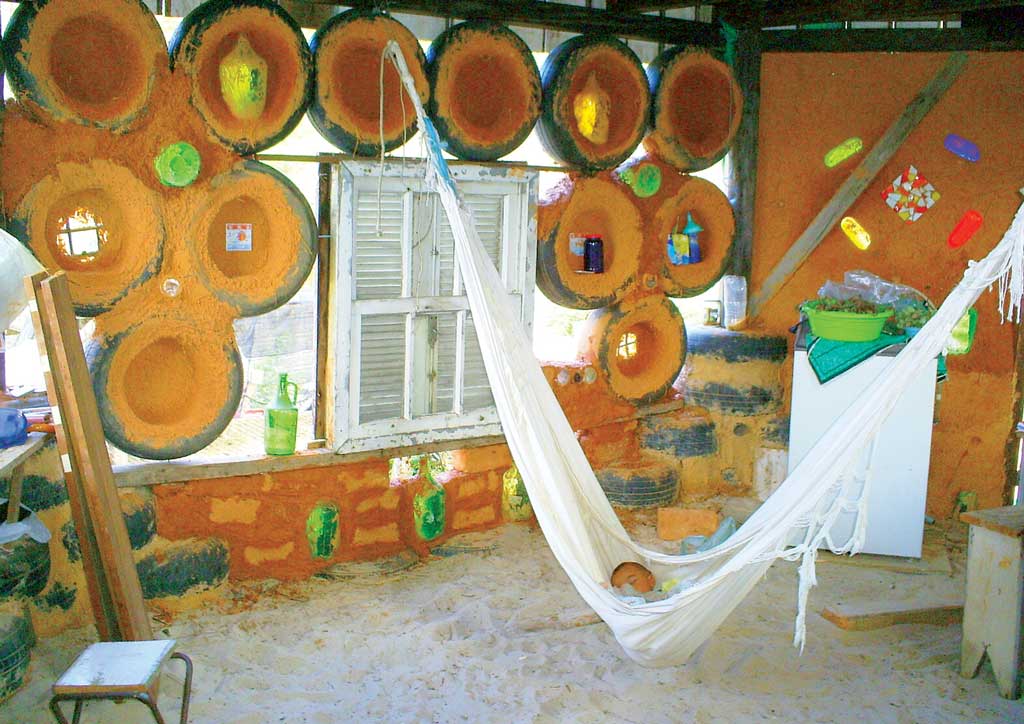
Inside the Bee House
Each wall of this hexagonal home under construction is different, artistically designed and created from local natural and discarded materials. Juliano and Teresa ran out of money after completing the foundations. Creative thinking led them to use discarded tyres, bottles, salvaged timber and glass, bush poles, clay and sand. Commitment, enthusiasm, love, and community engagement enable Juliano and Teresa to achieve so much with great joy and little money.
Photo contributed by Juliano Riciardi and was taken in Santa Catarina, Brazil.
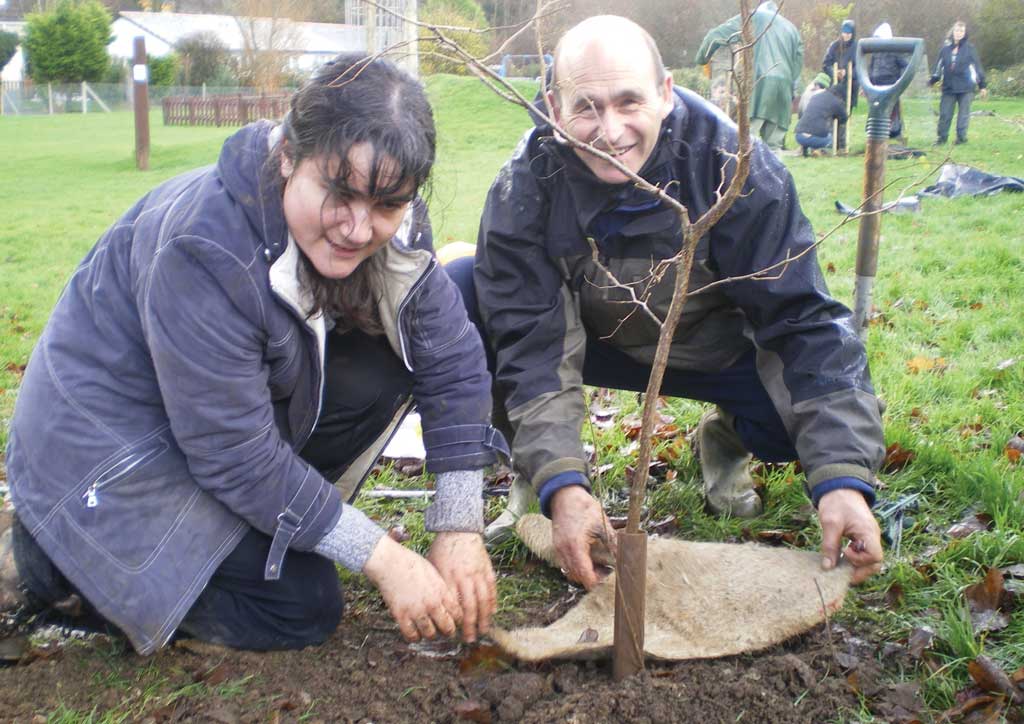
Totnes, the nut tree capital of Britain
‘Transition Town Totnes is organising to produce more of our food locally. These nut tree plantings are within the town area, and each tree is cared for by a tree guardian who tends it and makes sure it is doing OK. We see opportunities to relocalise our food supply through strengthening connections with local farmers, supporting home food growing, and public food trees.’
Photo and accompanying text contributed by Rob Hopkins
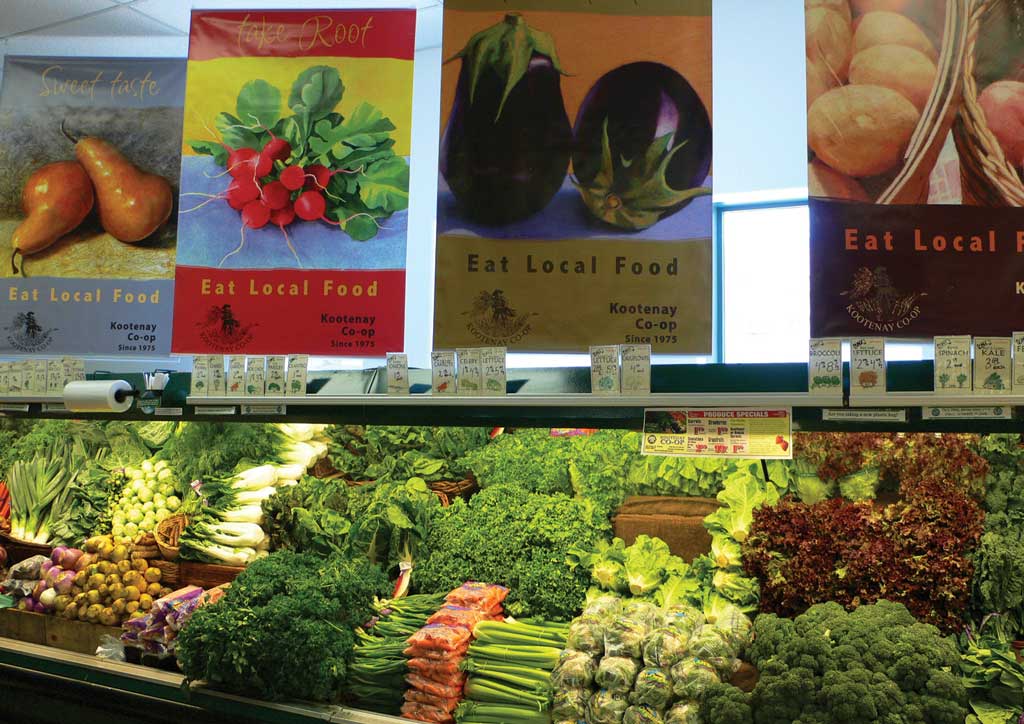
Co-operate
‘Nelson, British Columbia, has built a strong, democratic and community-owned alternative economy. Co-operative thinking permeates the community’s approach to localisation, with co-operatives for transport, food, radio and banking; as well as “cow-shares” and Canada’s first grain-focused community supported agriculture scheme. One local talked about the pleasure of conducting all of your daily transactions through community owned enterprises.’
Photo and accompanying text contributed by Joel Catchlove.
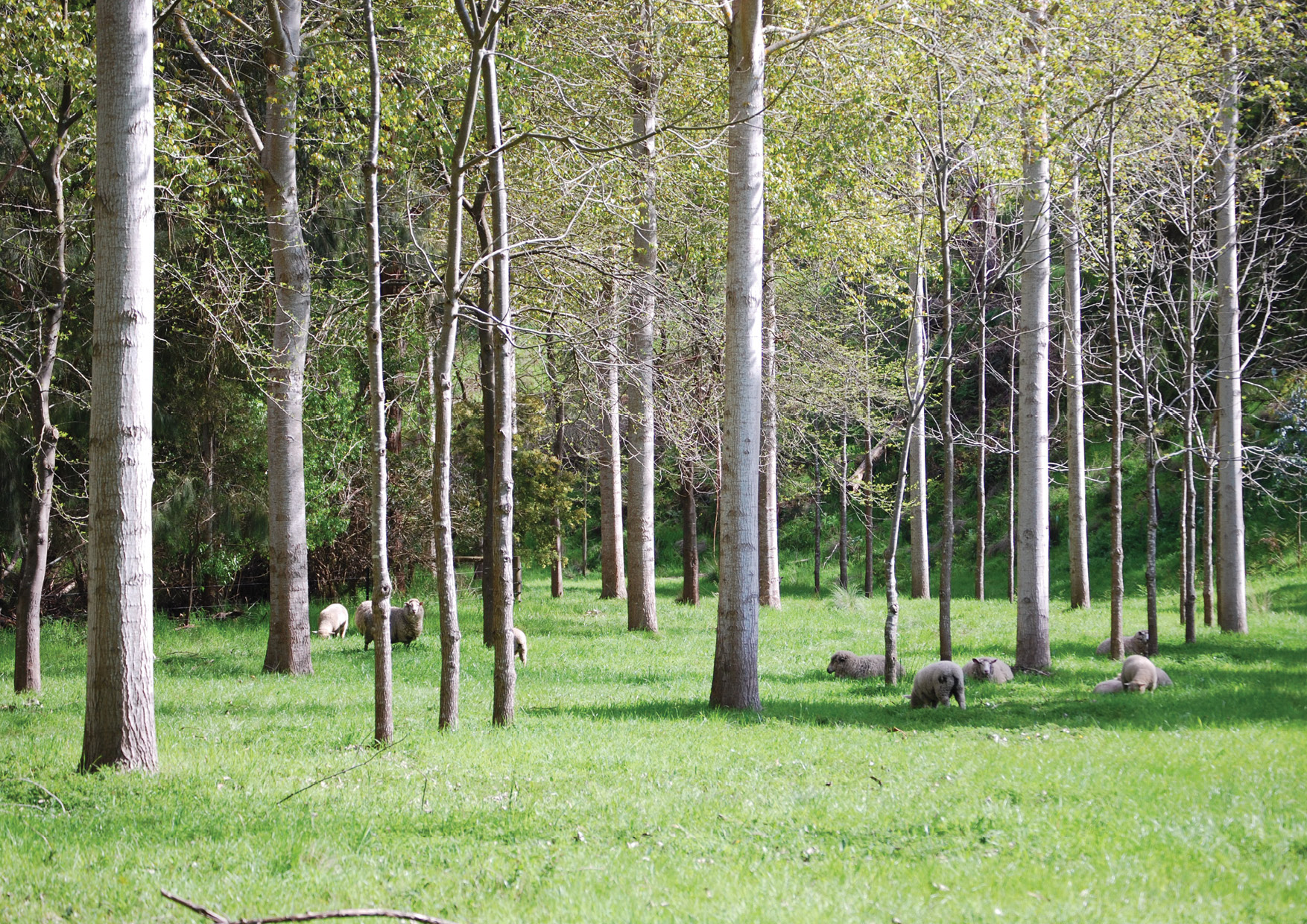
Imagine the future
“I planted these trees on this small patch of alluvial soil in 1987. They were planted for wood products, amenity, and to provide sheltered grazing underneath. My idea was to harvest the Poplars for high quality veneer as they reach 55cm in diameter and allow the Black Walnut to grow on for another 40 years after that. I am the custodian of this farm and one day it will pass onto my grandchildren. What better gift than a mature Black Walnut tree?” – Rowan Reid
Photographed at Bambra Agroforestry Farm in Australia by Rowen Reid. See Rowan’s book ‘Heartwood’.



